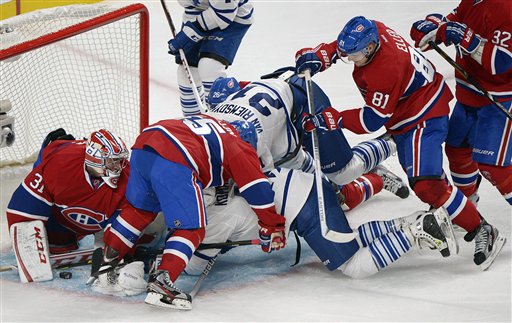
Clyde Sharpe
President of International Sales, Elasto Proxy
Yes, I was wrong. But I should have been right! In my last blog entry, I predicted that there wouldn’t be an NHL season this year. Last December, the negotiations between owners and players were as hard as a hockey puck on a cold winter’s day. Then a January thaw occurred. A deal was struck and teams took to the indoor ice for training camp. A week later and without any preseason games, the league launched a strike-shortened 48-game regular season. That’s 34 games less than in normal years and there won’t be any inter-conference play until the Stanley Cup Finals.
Here at Elasto Proxy headquarters in Quebec, Canada, I’m surrounded by fans of the Habs – the Montreal Canadiens. So unless the Habs host my favorite team, the Calgary Flames, in the Finals, I won’t have a chance to watch Alex Tanguay and company at the nearby Bell Centre. Yet John Rye, Elasto Proxy’s resident Toronto Maple Leafs fan, will have a chance to face-off against Megan Beaulieu and much of our production team when the Canadiens host the Leafs on February 9th. Still, it’s not the lack of inter-conference play that bothers me – and why my NHL prediction should have been right.
Hazards of a Shortened Hockey Season
As the hockey analyst Pierre McGuire explains, players need about 10 games to get into the rhythm of the season. If McGuire is correct (and I think that he is), that’s nearly 20% of this strike-shortened year. The abbreviated season also favors teams whose lineups haven’t changed much since the Los Angeles Kings hoisted the Cup last June. If chemistry counts, then teams like Philadelphia, Montreal, Toronto, the New York Rangers, and even Calgary will need to incorporate new players quickly. Gone is the pace of a full-length season, too, when many good teams slump in the middle yet finish strong in the end.
This year, hockey teams that get off to a slow start are at a disadvantage – and NHL players could be at risk, too. Although many skaters kept themselves in good condition, the strike did not prepare them for a regular season where every game counts and contests have a playoff-like intensity. Some hockey gear is made with shock-absorbing materials and gels that help reduce the risk of injury, but is this protective equipment really up to the task? Concussions aren’t just a problem in hockey, of course, as football fans in the U.S. will tell you.
Hockey Equipment and Player Protection
Except for the ones worn by goalies, most hockey headgear isn’t as eye-catching as the football helmets worn in the NFL (or even the CFL). In terms of preventing head injuries, however, what matters most is what’s inside. Most hockey helmets are made of a lightweight plastic, typically a polycarbonate material, and feature a one-piece or two-piece design. Underneath this hard plastic shell is a liner to help absorb impact and, in some products, a second liner for comfort. Because of our water jet cutting capabilities, Elasto Proxy has experience with custom-fabricating the EVA foam that’s used in helmet inserts.
Hockey protective equipment also includes rubber and plastic components such as mouth guards, ear protectors, and pads. Mouth guards come pre-formed and then mold to the mouth during use, or can be softened by heating and then molded by biting down on them. Ear protectors, another type of safety equipment, can be inserted into player helmets for extra comfort and protection. The hard plastic elbow pads that some skaters like provide protection, but can cause serious injury to opponents.
What Do You Think?
The NHL is back and the 2013 season is in full-swing. There have been some good games, a few fights, and at least one charging penalty that’s resulted in a one-game suspension. But should the NHL have had a season at all? And how well will hockey equipment help to protect players during the short, intense season?









